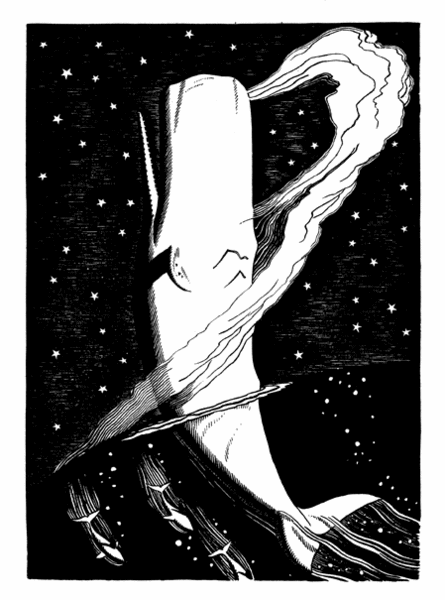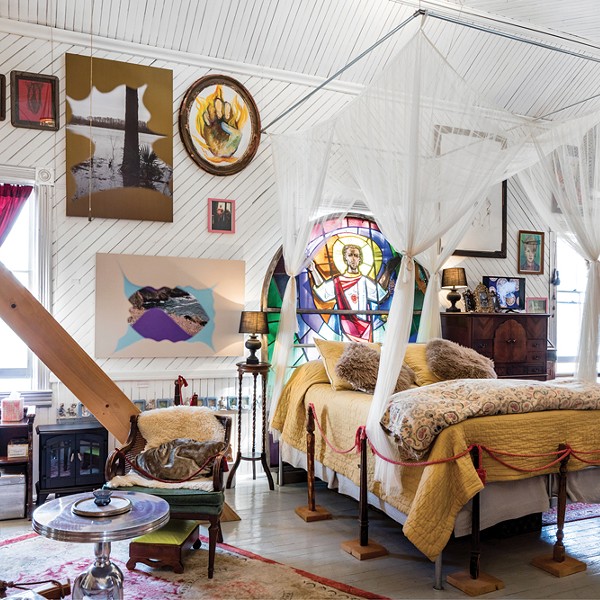Herman Melville died in obscurity in 1891, but over several decades a cult following emerged and in 1930 his epic Moby-Dick, with the help of Rockwell Kent’s eloquent woodcuts, became a bestseller. An adventurer who was attracted to frothy and forbidding waters, Kent felt a kindred bond with the novelist and recommended the book to a publisher that sought to exploit the illustrator’s talent and swashbuckling persona, and was not otherwise eager to revive the difficult tome.
Born in Tarrytown in 1882, Kent studied architecture at Columbia but left before receiving a degree to shift his energy to painting. Having fallen in with Ash Can School contemporaries George Bellows and Edward Hopper, Kent was exhibiting at major galleries in his twenties. Despite his metropolitan habitude, he was an admirer of Thoreau and avidly searched out pristine natural settings for his work. He voyaged to Alaska and Greenland, and daringly navigated Cape Horn in a small craft. The illustrated travelogues that he produced were to lend him a mythic stature among his art world peers. In between expeditions, he documented the jazz age with droll illustrations for magazines such as Harper’s Weekly and Vanity Fair under the pseudonym “Hogarth Jr.”
In midlife, Kent settled in the Adirondacks and bought a dairy farm with a clear view of Whiteface Mountain, which he termed “the noblest single mountain in New York State.” The region itself would inspire prolific output and also prove an ideal place to rework subjects that were derived from distant locales; Inuit with sled dogs that bustle diminutively in front of massive glaciers, for instance. His paintings drive home the ecological insight that nature should not be thought of as separate from human experience. The aesthetics by which we mediate nature were a concern of this artist—and his landscapes often cast a glance at the social collective.
A utopian socialist, labor activist, and Stalin sympathizer, Kent was harassed by the US government from the onset of the Cold War. In a characteristically radical move, he gave 80 paintings and 800 drawings to the Soviet Union in 1960. During his heyday, Random House printed a trade edition of Moby-Dick with only Kent’s name on the cover, inadvertently leaving Melville’s off. By the time he died in 1971, his outspokenness had left him unsavory and his reputation had receded. Though less known now, his work retains its heroic solemnity and grace.
“Rockwell Kent: This Is My Own” will be exhibited through July 5 in the West Gallery of the New York State Museum in Albany. www.nysm.nysed.gov.

















